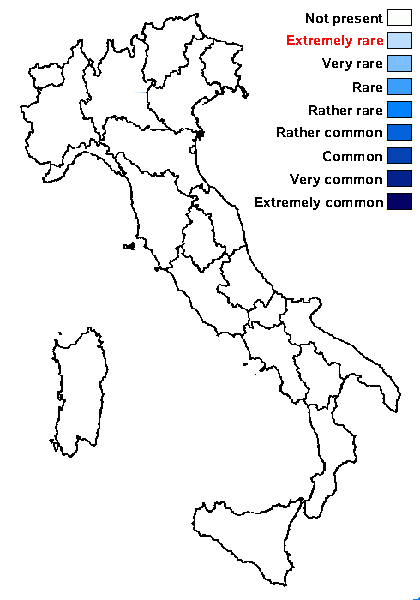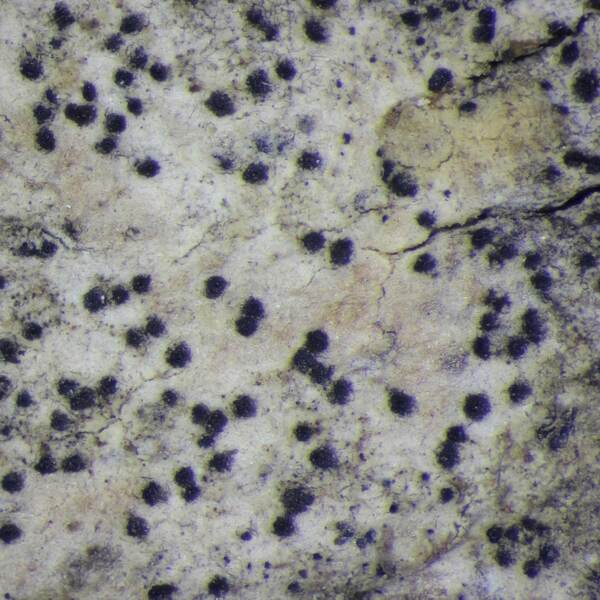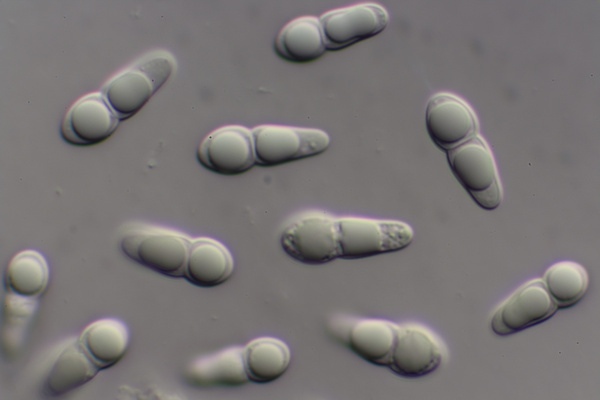Anisomeridium ranunculosporum (Coppins & P. James) Coppins
Checklist of Lichens of Great Britain and Ireland (UK): 86, 2002. Basionym: Arthopyrenia ranunculospora Coppins & P. James - in Coppins, Lichenologist, 20: 318, 1988
Synonyms:
Distribution:
Description: Thallus crustose, endosubstratic, ecorticate, white to very pale brown, often with a pinkish hue when fresh. Perithecia black, 0.15-0.35 mm across, 0.2-0.3 mm tall, circular or ellipsoid, often appearing matt or pruinose due to a thin covering of bark cells, scattered or clustered in small groups. Involucrellum brown, K+ greenish; exciple brown and 30-50 μm thick in upper part; paler and thinner in lower part, of cellular hyphae, usually without bark cells; pseudoparaphyses 0.5-1.5 µm thick, persistent, much branched and anastomosing, the cells 4-10 µm long; periphyses absent. Asci 8-spored, obpyriform, K/I-, fissitunicate, the apical dome with an indistinct ocular chamber, 35-42 x 12-17 µm. Ascospores, 1-septate, constricted at septum, hyaline, tadpole-shaped, with a short, uniguttulate upper cell and an elongate, biguttulate lower cell with a median constriction, (12-)14-16 x 4.5-6 µm, surrounded by a narrow gelatinous sheath at least when young. Pycnidia frequent, black, of two types: (a) c. 0.1 mm across, with oblong-ellipsoid, 0(-1)-septate macroconidia measuring 7.5-10(-12) x 3.5-4.5 µm; (b) c. 0.05 mm across, with bacilliform microconidia measuring 3.5-4 x 0.5-1 µm. Photobiont trentepohlioid. Spot tests: thallus K-, C-, KC-, P-, UV-. Chemistry: without lichen substances.Note: on smooth bark in old-growth broad-leaved forests; perhaps overlooked but certainly rare in the Alps (Styria), more common in Western Europe. To be looked for, especially in Tyrrhenian Italy.
Growth form: Crustose
Substrata: bark
Photobiont: Trentepohlia
Reproductive strategy: mainly sexual, or asexual by conidia and thalloconidia
Most common in areas with a humid-warm climate (e.g. most of Tyrrenian Italy)

Predictive model
Growth form: Crustose
Substrata: bark
Photobiont: Trentepohlia
Reproductive strategy: mainly sexual, or asexual by conidia and thalloconidia
Most common in areas with a humid-warm climate (e.g. most of Tyrrenian Italy)

Predictive model
 INDEX FUNGORUM
INDEX FUNGORUM
 GBIF
GBIF



